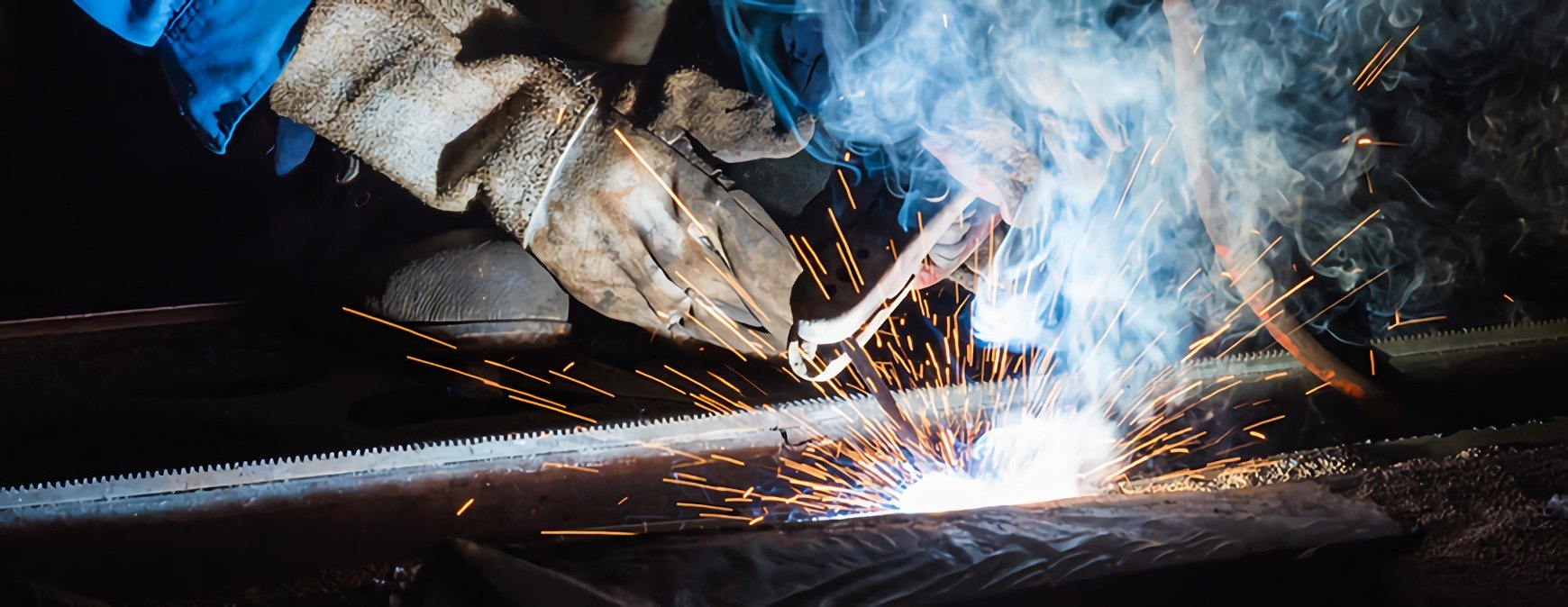
Arc welding uses an electrical power source to create an arc between the base metal and the electrode stick or wire. The arc is struck once you turn on the welding machine, adjust the settings, get safety gear in place, and scratch or tap the electrode against the base metal. The hot arc melts the metals where they should be joined. The molten material – often with filler – can then be crafted into a weld.
There are different types of arc welding. Which arc welding method you use depends mostly on the metal. Following is an overview of various kinds of arc welding techniques:

-
Flux-cored arc welding (FCAW)
This type of arc welding uses tubular electrodes filled with flux. While emissive flux shields the arc from air, nonemissive fluxes may need shielding gases. It is ideal for welding dense sections that are an inch or more thick because FCAW has a higher weld-metal deposition rate.
-
Gas metal arc welding (GMAW)
GMAW or MIG welding shields the arc with a gas like argon or helium or a gas mix. The electrodes have deoxidizers that prevent oxidation, so you can weld multiple layers. This method has several benefits: simple, versatile, economical, low temperatures, and easily automated. This is a popular welding technique for thin sheets and sections.
-
Gas tungsten arc welding (GTAW)
GTAW or TIG welding, is often considered to be the most difficult. Tungsten electrodes create the arc. Inert gases like argon or helium or a mix of the two is used to protect the shield. Filler wires add molten material if needed. This method is much “cleaner” as it doesn’t produce slag, making it ideal for welding jobs where appearance matters as well as thin materials.
-
Plasma arc welding (PAW)
This arc welding technique uses ionized gases and electrodes that create hot plasma jets aimed at the welding area. As the jets are extremely hot, this method for narrow and deep welds. PAW is also good for increasing welding speeds.
-
Shielded metal arc welding (SMAW)
SMAW is one of the simplest, oldest, and most adaptable arc welding methods, making it very popular. The arc is generated when the coated electrode tip touches the welding area and is then withdrawn to maintain the arc. The heat melts the tip, coating, and metal, so that the weld is formed once that alloy solidifies. This technique is typically used in pipeline work, shipbuilding, and construction.
-
Submerged arc welding (SAW)
SAW works with a granular flux that creates a thick layer during welding, which completely covers the molten metal and prevents sparks and spatter. This method enables deeper heat penetration because it acts like a thermal insulator. SAW is sued for high-speed sheet or plate steel welding. It can be semiautomatic or automatic. However, it is limited to horizontal welds. 1
TWS’ welding training covers the most common arc welding methods, so that you can be well prepared for the welding demands of different industries and applications. Some techniques may be more challenging than others, but plenty of practice can turn you into an all-around arc welding professional.
Learn more about other types of welding by reading our Ultimate Guide to Every Different Type of Welding.
Have You Considered a Career in the Skilled Trades?
Fill out the form to recieve a no obligation info packet.
Additional Sources
1 – https://www.bakersgas.com/weldmyworld/2011/05/05/different-types-arc-welding/
This blog has been labeled as archived as it may no longer contain the most up-to-date data. For a list of all current blog posts, please visit our blog homepage at https://www.tws.edu/blog/




